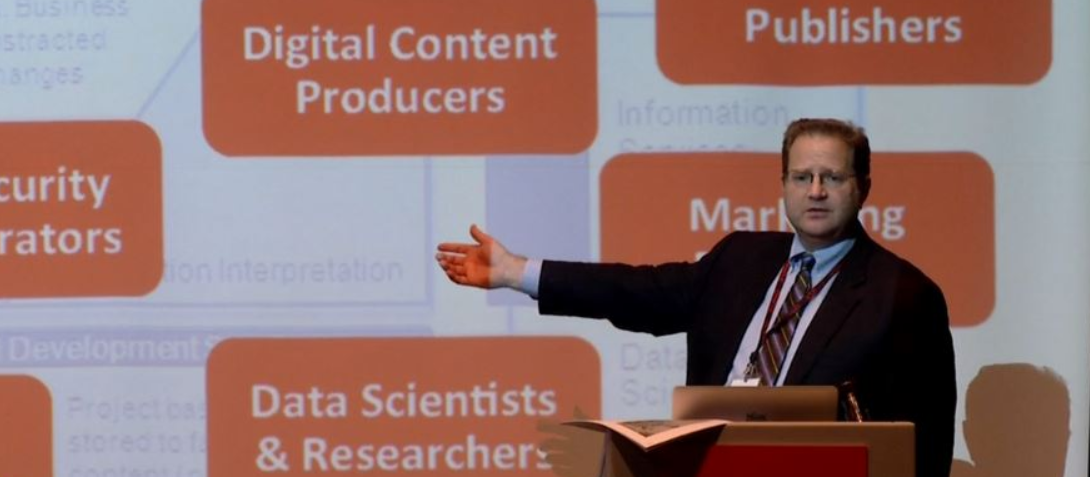Most large IT Investments in Federal and State governments require a Program Management Office (PMO) function to help the buyer (i.e. the Government) manage the IT planning and implementation activities from cost, schedule and compliance perspectives. PMO’s are most often the domain of project managers and cost-management specialists, “running the numbers” according to contract language, quality and risk management protocol, “Earned Value Metrics” and other compliance or oversight controls.
More and more frequently, however, the PMO is tasked with understanding, advising and managing spending or compliance concerning very technical facets of the program, ranging from strategic Enterprise Architecture and SOA alignment, to more tactical preparation or review of technical standards, models and engineering methods. In essence, the PMO’s responsibilities begin to overlap more frequently with and require close coordination with programs domains historically more organizationally-distinct – i.e. the “Enterprise Architecture” group, the “Budget and Acquisition” group, “Centers of Excellence”, etc. More formal mechanisms and structures are required to define the PMO’s “Technology Monitoring & Management” role, and integrate these “PTMO’s” (Program Technical Management Office, or "IT PMO") governance processes with those at the enterprise level.
By establishing a “Program Technical Management Office” structure, Situational Awareness (SA) with respect to the IT investment is more easily achieved. By SA, I mean the same set of real-time, continuous factors and outcomes that are defined in Wikipedia as “the perception of environmental elements within a volume of time and space, the comprehension of their meaning, and the projection of their status in the near future.” In an IT investment environment more and more driven by opportunities for leverage and reuse, SOA-aligned collaboration and information-sharing, and “open source” or “Web 2.0” capabilities, the “environmental” elements that shape the success or failure of an IT investment require SA attention by a PMO, or PTMO. A PTMO might be charged with understanding and managing:
- The availability of data, information and information access methods elsewhere in the Enterprise, that can be leveraged for the new program;
- The pending completion of an Enterprise or Domain regulation or standard regarding an IT component or method – that should be considered in planning and technology acquisition or testing;
- The status of IT investments elsewhere in the department or business community that overlap the program at any layer of the program or technical architecture, and might be reused; or
- The status of 3rd-party software or services from a release perspective, or from an availability perspective, made so by regulation, MOU, SLA or legal agreement at the agency or broader community level.
The “top down” view of all the IT Investment-related factors influencing a program’s acquisition and success is a view that most CIOs already know to build, through a combination of relationships, “dashboard” tools and reports, and system operations views. Their “Common Operating Picture” (COP), if you will. It’s a view “Common” to those involved in high-level decision-making, IT investment review, and enterprise strategic planning.
Situational Awareness of an IT Investment, however, isn’t fully accomplished by the top-down view, especially in a new world of SOA-driven Web 2.0-enabled capabilities. The bottom-up, user-defined view (or “UDOP”: User-defined Operating Picture) is a critical contributor to the program leadership’s decision-making.
For example, there may be subject-matter experts who independently, or collaboratively, analyze and correlate information critical to the evaluation of an IT component, and that should be easily surfaced and discoverable by the PTMO. The PTMO may actually solicit point evaluations, tests or “mashups” of data from stakeholders that, while not part of the “formal” acquisition or systems engineering lifecycle set of artifacts, is nevertheless an important information point or indicator of possible risk.
How are UDOP principles created, encouraged and leveraged by PMO’s, via PTMO’s? It starts with identification and use of internal collaboration capabilities, and exercise, as possible, of social media tools (i.e. tools that enable user-driven feedback, collaboration, and information management). Lots more discussion to go on this topic – the takeway is that Situational Awareness about an IT Investment is most thoroughly delivered via addition of “Technology” focus to a PMO, and approaching the collection, correlation and visualization of information regarding the program and investment from BOTH a COP and UDOP perspective.

Comments